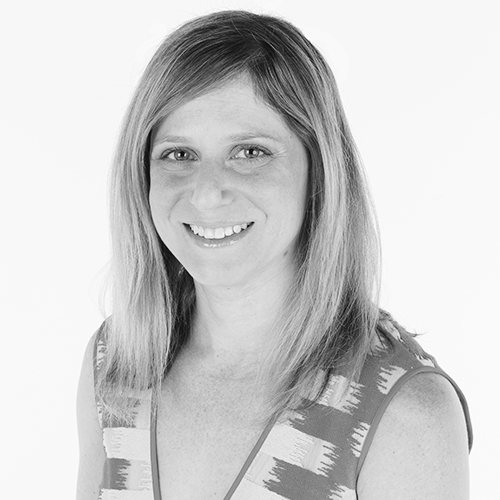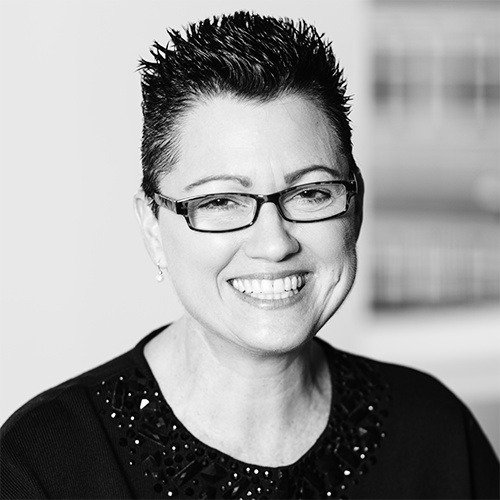In the early 1980s, a college student drove a truck full of meat across South Dakota. He was working during his summer break, delivering products all over the state, including the second poorest county in the United States. That county housed the Rosebud American Indian Reservation, where the young man was shocked and troubled by the poverty he witnessed a mere two-and-a-half hours away from his hometown of Norfolk, Nebraska.
After making his delivery in Rosebud, the student thought, “If I ever have a chance to give back to people on a reservation like this, I’m going to do it.”
Thirty years later, Curt Oltmans had worked his way to corporate vice president and US general counsel of Novo Nordisk, a health-care company leading initiatives to prevent and treat diabetes around the world. In 2011, Oltmans was asked to take over a special initiative to raise diabetes awareness among American Indians and, specifically, to work with the Rosebud Sioux Tribe in—incredibly enough—the Rosebud American Indian Reservation.
By that time in his career, Oltmans was well aware of several troubling realities that many Americans are unaware of, such as that three of the ten poorest counties in the United States are in South Dakota, each with a different Indian reservation. He had personally witnessed the poverty caused by 75 percent unemployment on these reservations, and he had seen the effects of poor health due to lack of nutrition and health education. He knew that indigenous people are at a higher risk of developing type 2 diabetes than others and that the disease can possibly be prevented in children living a healthy, active lifestyle.
“If you’re presented with an opportunity, even if you think you’re not ready, raise your hand anyway.”
So, equipped with this information and a thirty-year-old desire to give back to the American Indian population, Oltmans readily agreed.
Taking over the project in Rosebud was a unique leadership development opportunity for Oltmans. He was presented with a blank canvas, asked to define it, develop a proposal, and implement it. He was given the freedom to explore new options and think creatively, to invest in his own learning, and to grow in his profession through engaging new experiences—a dream come true.
The first step was to set up a governance structure with true cross-functional representatives. A trust with a national bank was established to benefit American Indians with diabetes. Over the next two years, Oltmans went to work earning the—arguably—more important trust of the Rosebud Sioux tribe. “The tribal council agreed to explore the option of our proposed project in 2011,” he says, but they made no promises. Oltmans asked the International Diabetes Center in Minneapolis to conduct an independent assessment of the situation in Rosebud, which was funded by the trust at no cost to the tribe. The tribal council endorsed all of its findings, and the Novo Nordisk team got to work on strategies to implement them.
Making a difference in the reservation’s diabetes challenge meant first making a commitment to the people of Rosebud. Many other organizations and individuals had come before with grand plans to bring change, and all of those plans and promises had fizzled and failed. Oltmans’s team was determined that Novo Nordisk would be different.
Off the Cuff
with Curt Oltmans
Modern Counsel: Which three words best describe you?
Curt Oltmans: Empower your employees.
MC: What do you believe is possible that others don’t?
CO: That in-house lawyers can bring tremendous value to the business as long as we’re embedded in it.
MC: What is your favorite legal term?
CO: Caveat emptor.
MC: What’s one thing few people know about you?
CO: Someday, I would like to live off the grid in a remote area for at least a year.
That meant investing in a deep understanding of the tribe’s culture and being willing to accept it without trying to change it—even medicinally. “We wanted to find a way for holistic, spiritual medicine to coexist with Western treatment of diabetes,” says Oltmans. “It wasn’t easy, but because we were committed to being that open, they were willing to talk with us.”
Once that fledgling trust was established, Oltmans protected it above all else. It was crucial that the tribal leaders were invested in the project and heavily involved in its design, but the tribe would not be rushed. “The leadership at Novo Nordisk was excited about the project and wanted us to move quickly,” says Oltmans. “So I spent a lot of time explaining that we had to move at the tribe’s pace and why that was important. I learned to be patient—something that is not a strength for me.”
Novo Nordisk funded the construction of a 13,000-square-foot wellness center on the reservation, which is staffed by reservation residents. It offers diabetes education and awareness resources, as well as exercise equipment, a walking track, examination rooms, a teaching kitchen, and office space. It has a drive-through garage that houses a mobile medical unit—another Novo Nordisk donation.
Every August, approximately twenty “Rosebud Ambassadors” visit the reservation from different teams within Novo Nordisk and donate their time for local community service. All of this is a continuation of Novo Nordisk’s commitment to the health of the reservation residents.
Oltmans is also committed to leadership development for himself and his team. He is a proponent of constant learning, and he believes it is crucial to engage in unique—even unorthodox—methods of acquiring it. “I’m a big believer in accepting unusual projects when they come along,” he says. “If you’re presented with an opportunity, even if you think you’re not ready, raise your hand anyway.”
The Rosebud project was one such opportunity for Oltmans, and it profoundly impacted him—so much so that he was inspired to find ways for his team at Novo Nordisk to have similarly impactful firsthand experiences.
Oltmans finds the development of his legal team highly rewarding, and it is one of his top priorities. For example, a young lawyer on his legal team was recently sent to another department to fill a nonattorney business role, and an employment lawyer was sent to cover a maternity leave in human resources for four months.
“To be able to offer legal depth in-house, we need to be more creative in rotating people outside the group,” he says. He even went so far as to ask two members of his leadership team to switch jobs for two years, swapping the brand attorney leader and the leader of the sales support group. “It can be difficult to create development and learning opportunities in an in-house legal department,” he says. “So we have to be creative.”
Whether claiming the freedom to explore new responsibilities, filling a blank canvas with new ideas, or driving a meat truck across South Dakota, Oltmans knows there is no replacement for lessons learned through firsthand experience.
Investing in those experiences for himself and others is the most rewarding experience of all, because when his team is empowered to learn at new depths, they know they are in a safe environment to experiment and make mistakes.
That cycle guides him as he leads his team at Novo Nordisk to invest in trust, promote education, and seek to truly understand.
By the Numbers: Health in the American Indian population
1. American Indian adults are 2.3 times more likely to be diagnosed with diabetes, and American Indian youth between ten and nineteen years old are nine times more likely to be diagnosed with type 2 diabetes than non-Hispanic whites
2. The death rate due to diabetes is 1.6 times higher and the rate of kidney failure due to diabetes is 1.9 times higher for American Indians than the general US population
3. Adults with diabetes are two to four times more at risk of stroke and death due to heart disease than adults without diabetes
4. Results from the “Strong Heart Study” suggest that the risk for cardiovascular disease in American Indian adults with diabetes may be three to eight times higher than those without diabetes
5. People with diagnosed diabetes pay medical expenditures that are approximately 2.3 times higher than expenditures would be without diabetes
Source: Novo Nordisk

